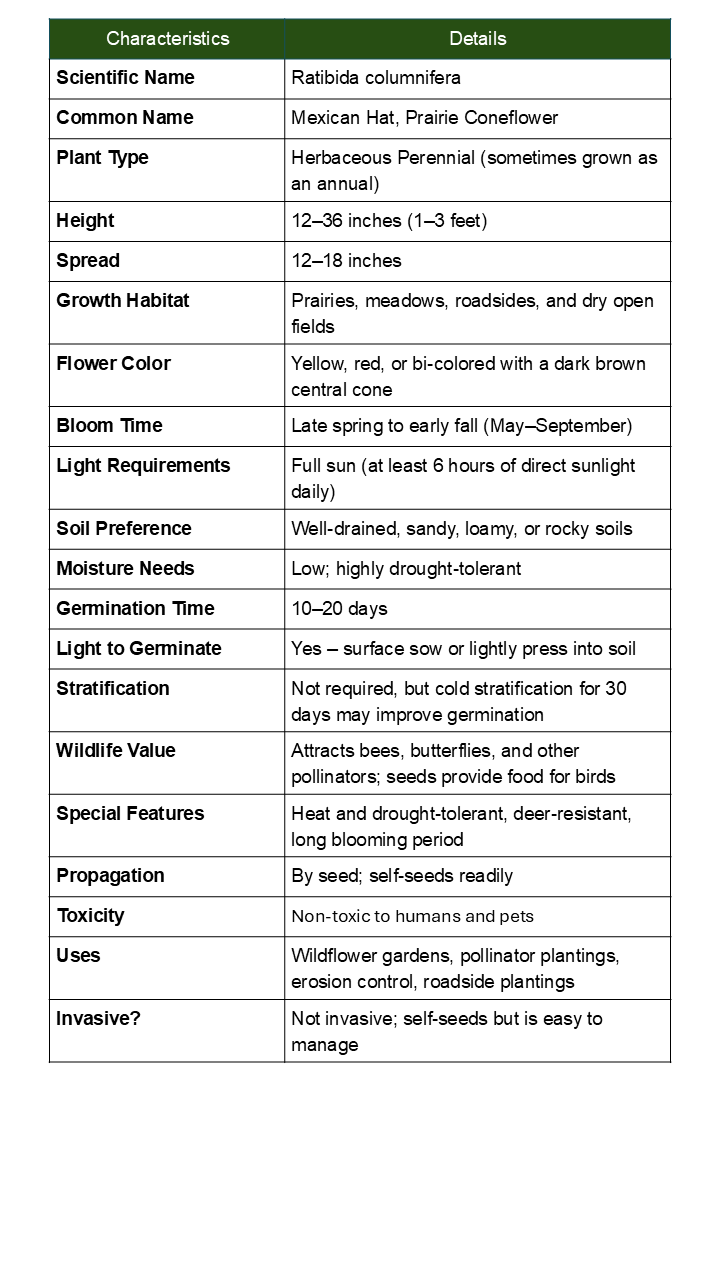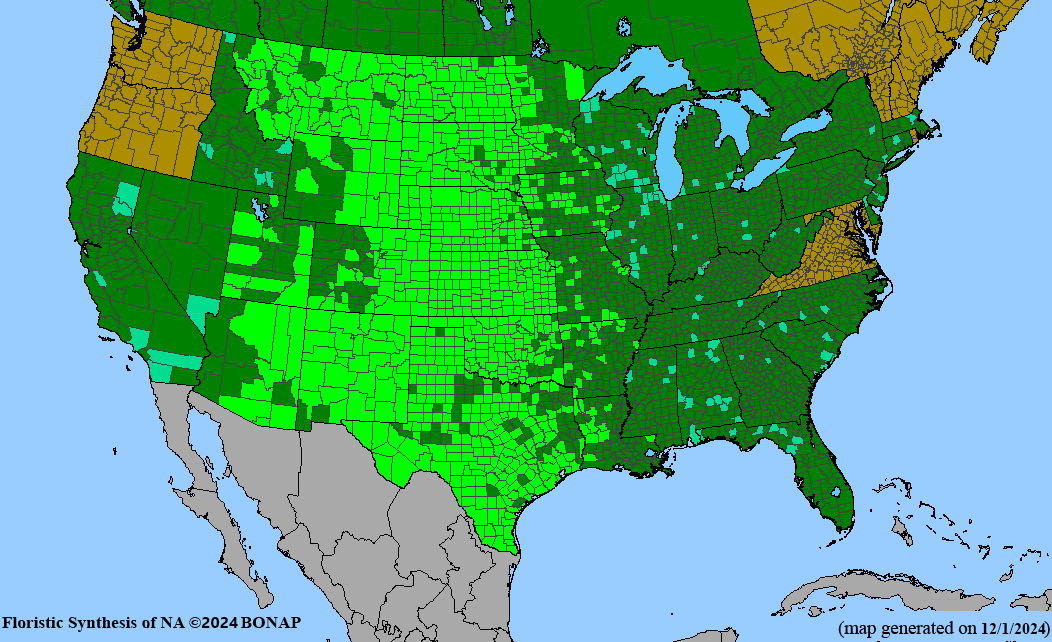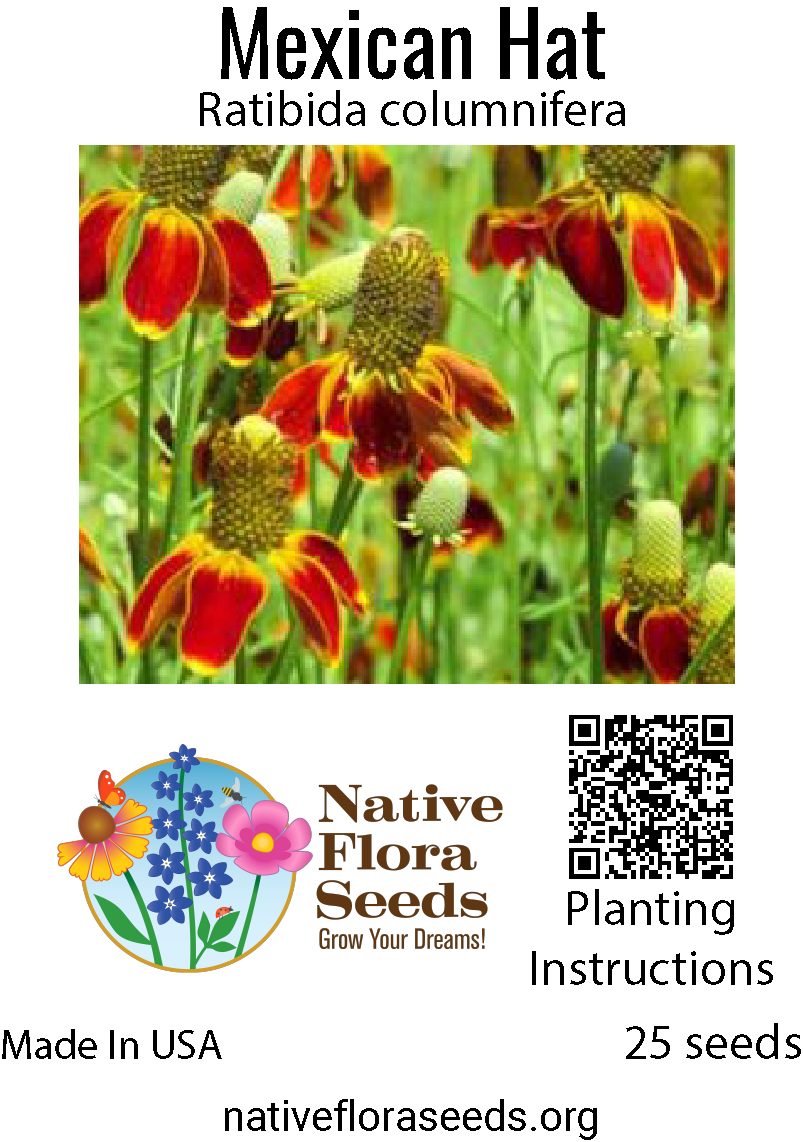Mexican Hat Seeds - Premium Ratibida columnifera for Prairie Wildflower Gardens
Regular price$4.00
/
Tax included.
2 reviews
Iconic Prairie Beauty - Mexican Hat
Mexican Hat (Ratibida columnifera), also known as Prairie Coneflower, is one of the most distinctive and beloved wildflowers of the American prairie. This charming perennial produces unique flowers that truly resemble tiny Mexican sombreros, with drooping yellow or red petals surrounding prominent cone-shaped centers.
🌻 Key Benefits:
- Unique Appearance: Distinctive sombrero-shaped flowers create instant conversation pieces
- Long Bloom Season: Flowers continuously from mid-summer through fall
- Extreme Drought Tolerance: Thrives in hot, dry conditions with minimal water
- Pollinator Favorite: Attracts butterflies, bees, and beneficial insects
- Self-Seeding: Perennial that readily naturalizes and spreads
- Cut Flower Value: Unique blooms add character to arrangements
🌱 Plant Characteristics:
- Height: 1-4 feet tall, 1-2 feet wide
- Bloom Time: Mid-summer through fall
- Flowers: Yellow or red drooping petals around prominent brown cone centers
- Foliage: Deeply divided, blue-green leaves
- Light: Full sun (essential for best performance)
- Soil: Well-draining, sandy or rocky soils preferred
- Zones: 3-9
🎯 Perfect For:
- Prairie restoration and native plant gardens
- Xeriscaping and drought-tolerant landscapes
- Wildflower meadows and naturalized areas
- Children's gardens (fun, recognizable flower shape)
- Pollinator habitat creation
- Cut flower and cottage gardens
Growing Tips: Direct sow in fall or early spring. Seeds germinate easily in cool weather. Plants prefer full sun and excellent drainage. Very low maintenance once established.
Each packet contains fresh, viable seeds with detailed growing instructions. Sustainably sourced from native Great Plains populations.
FREE SHIPPING WITHIN USA



